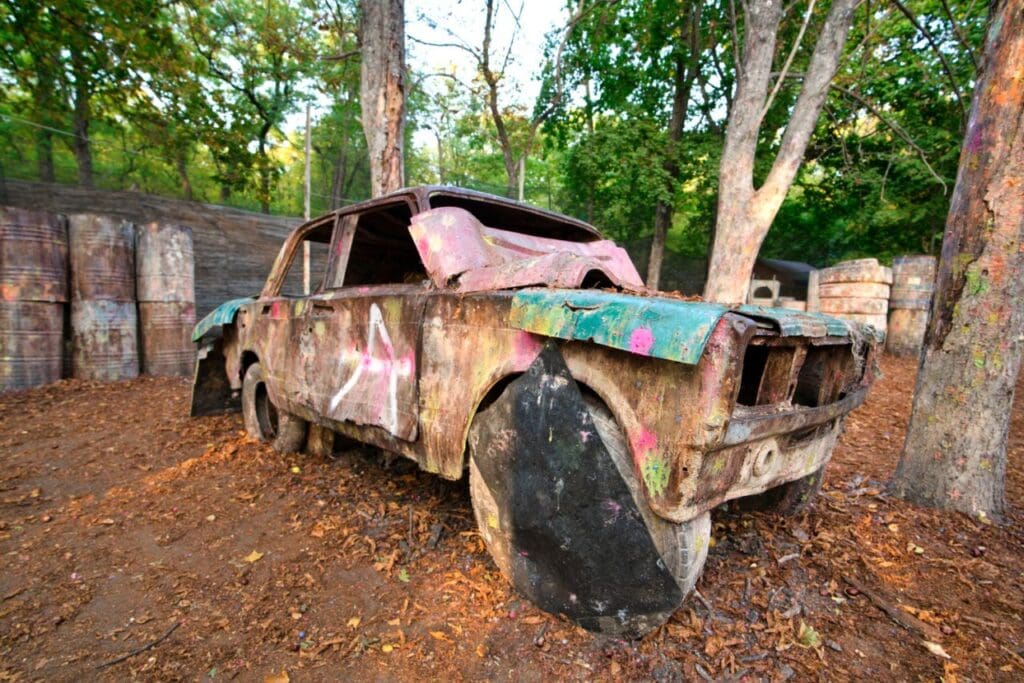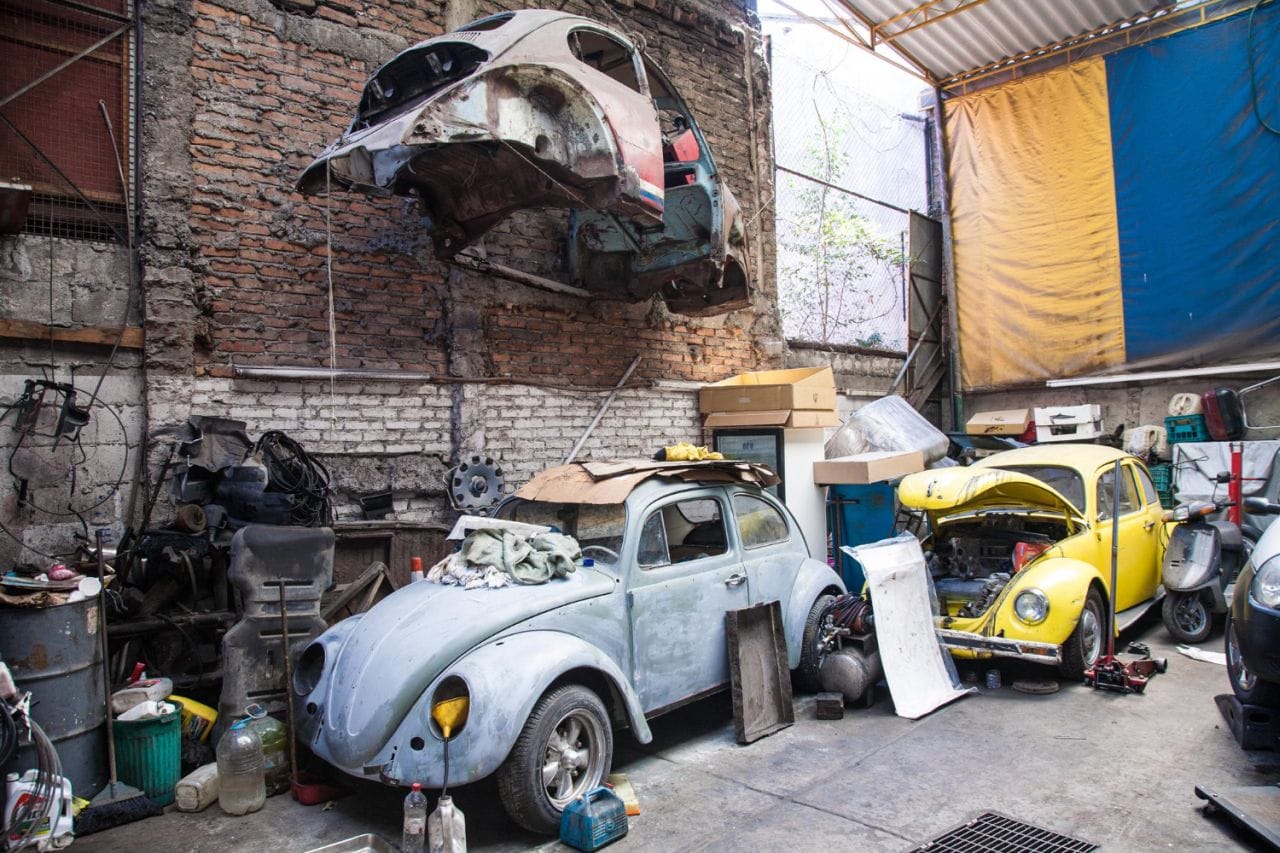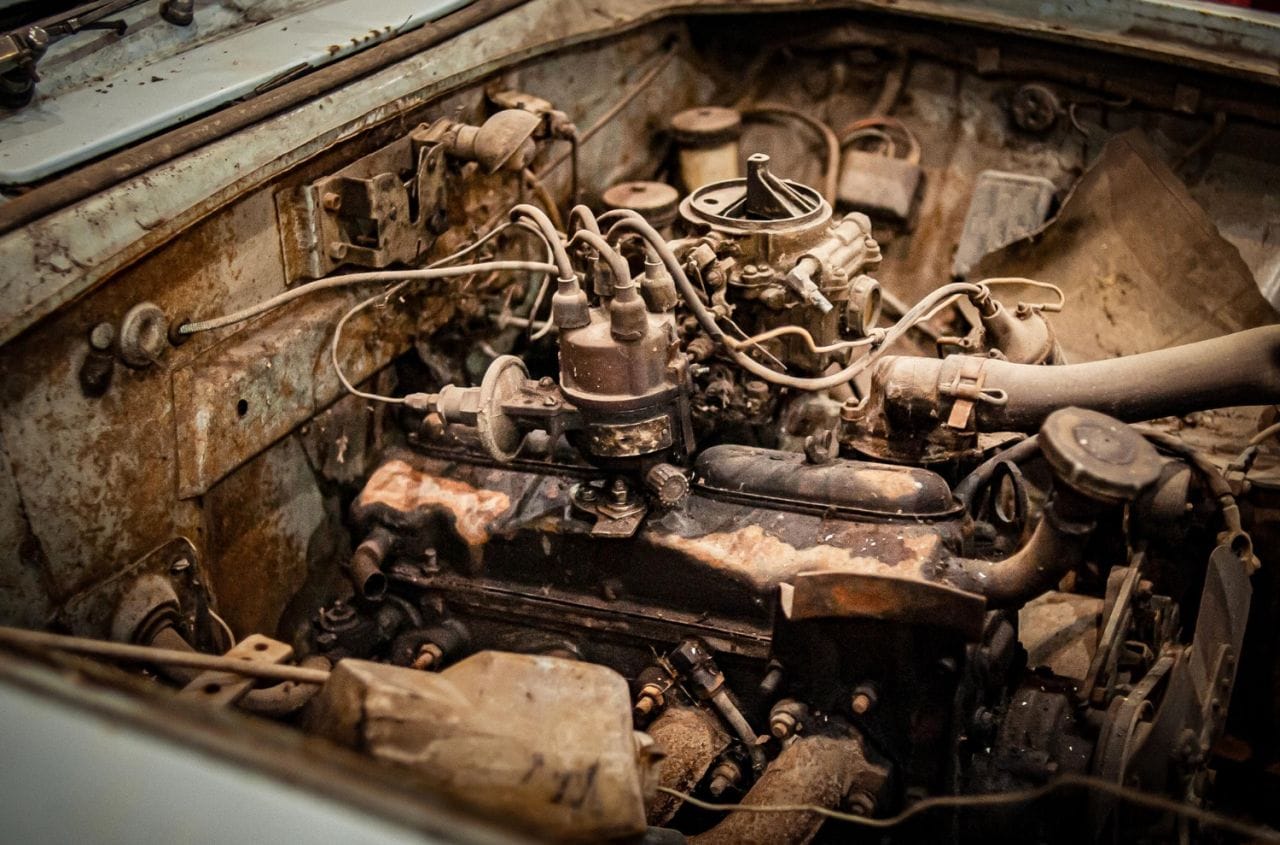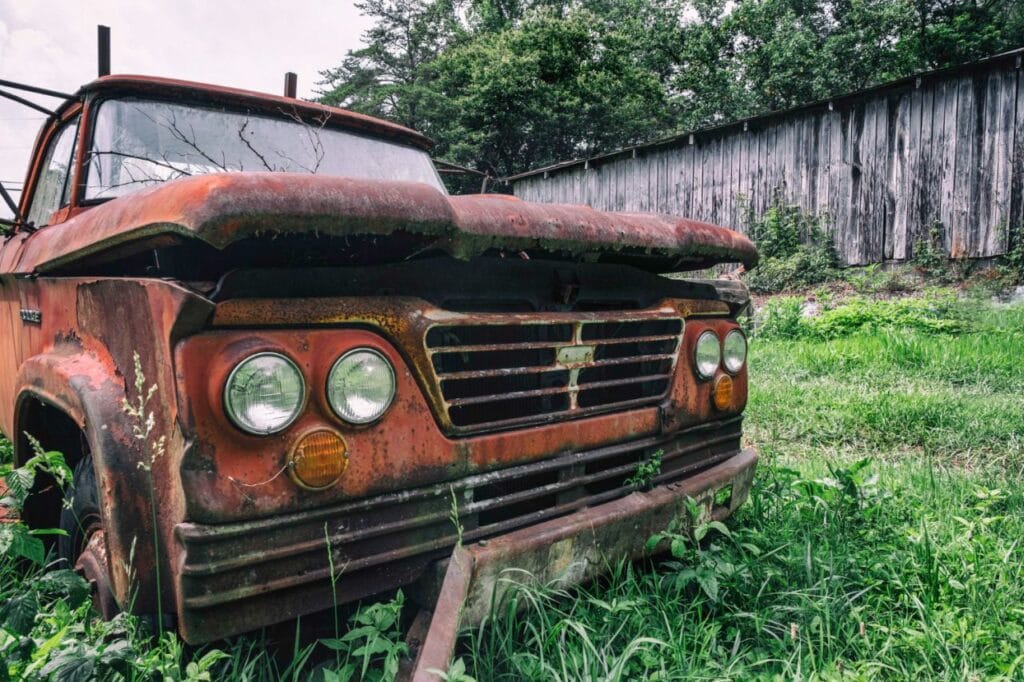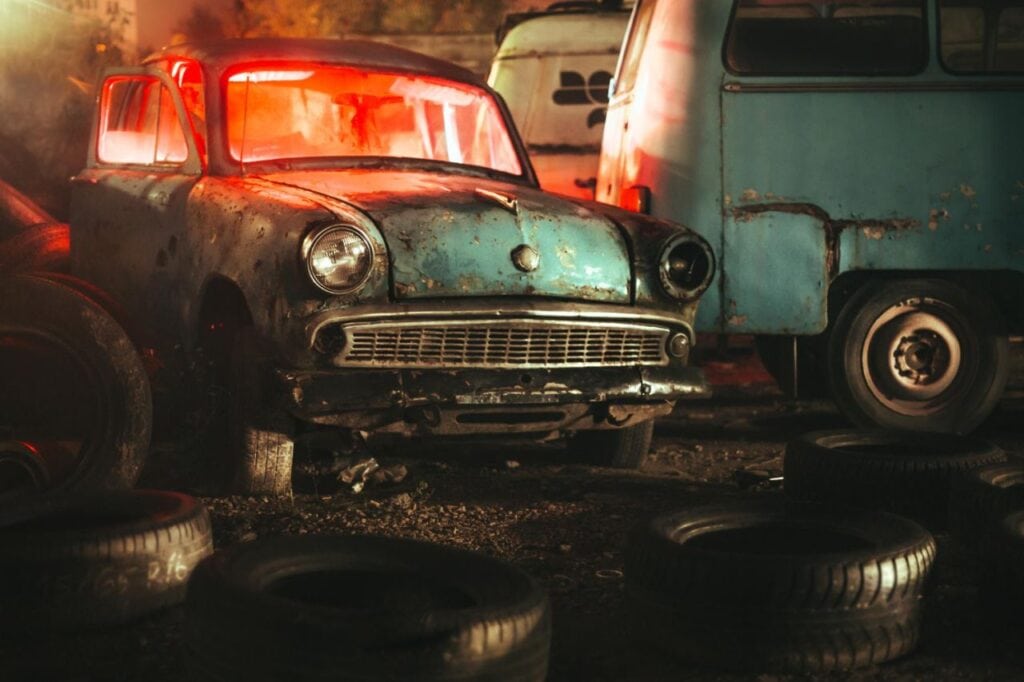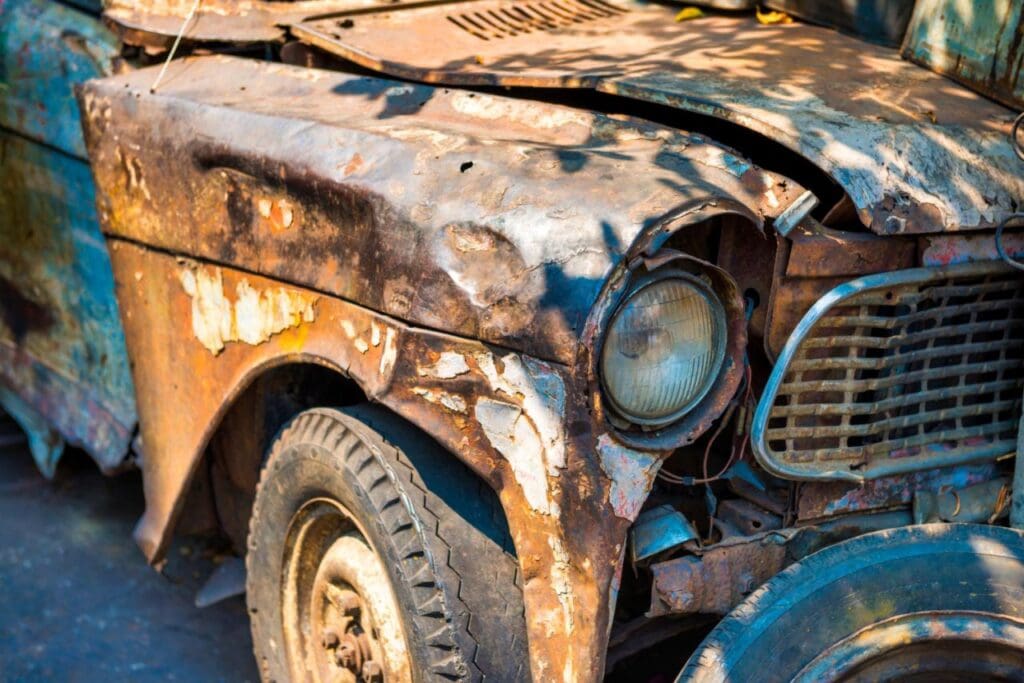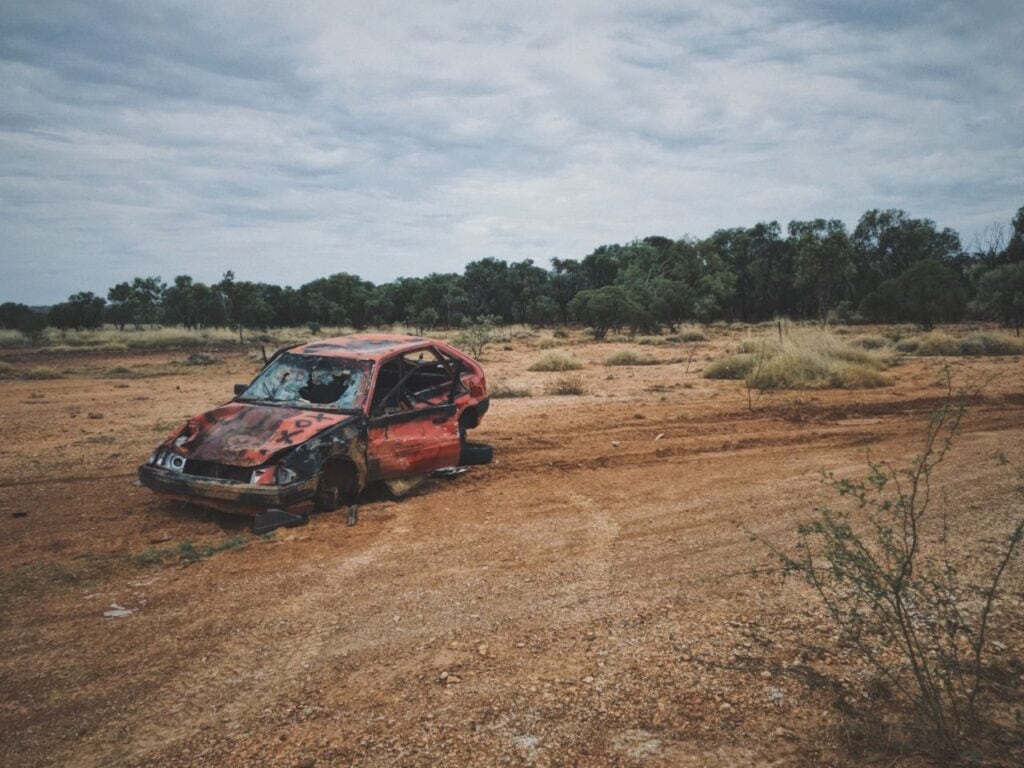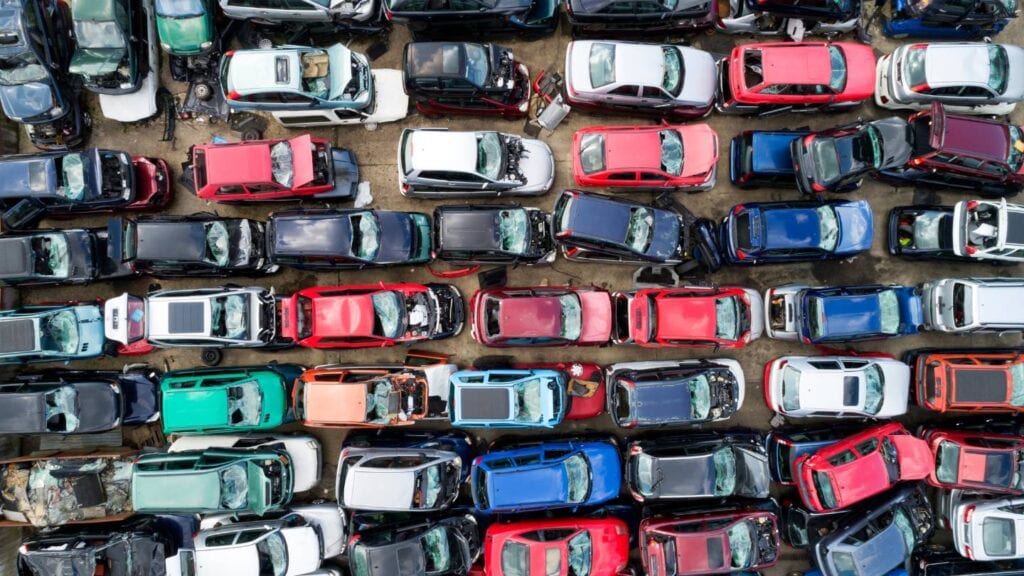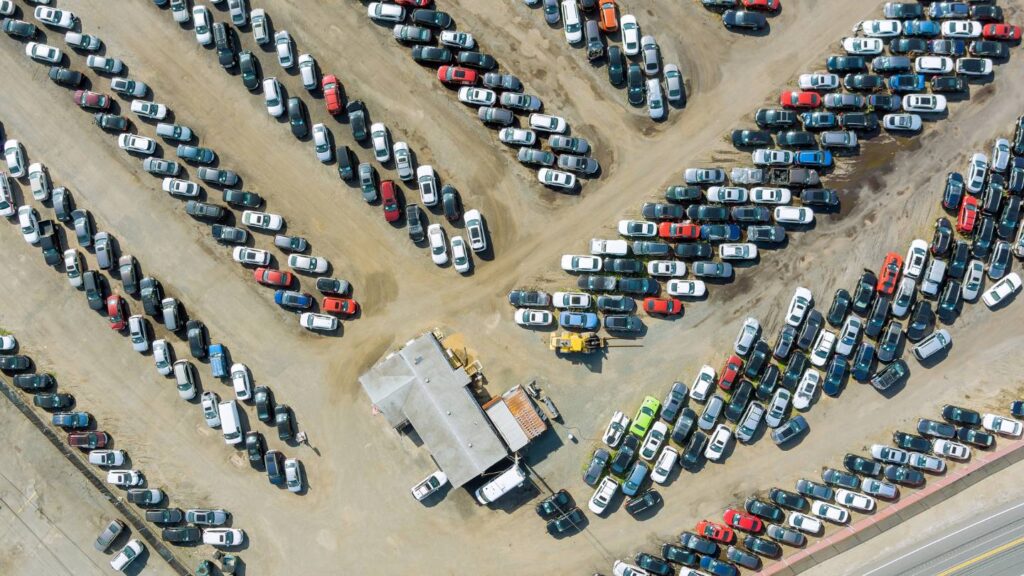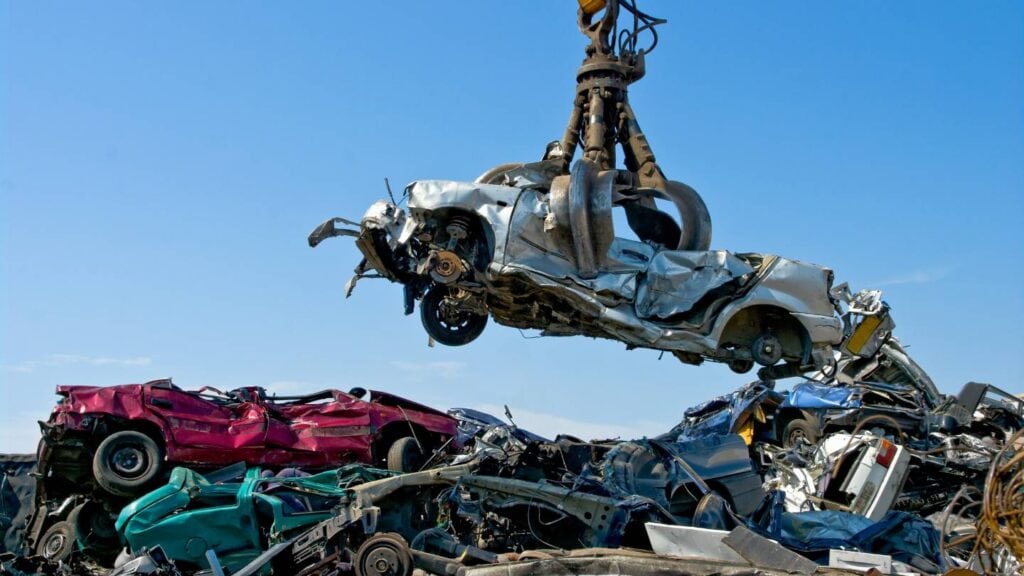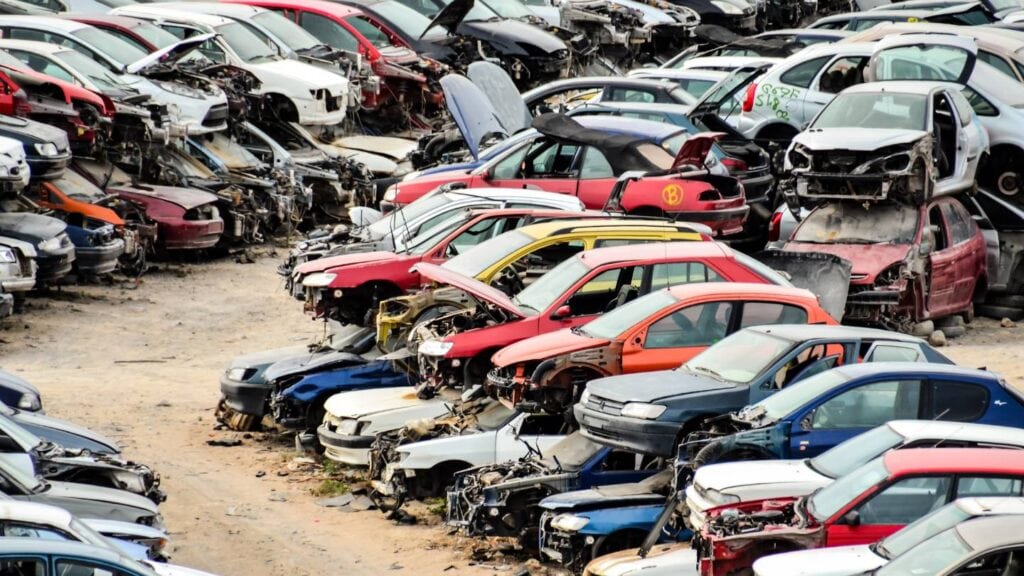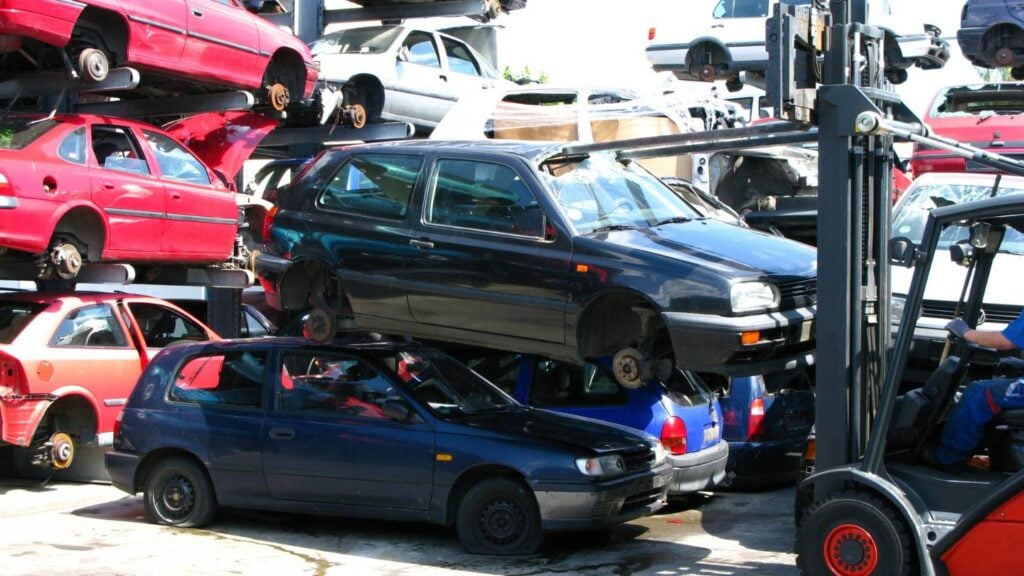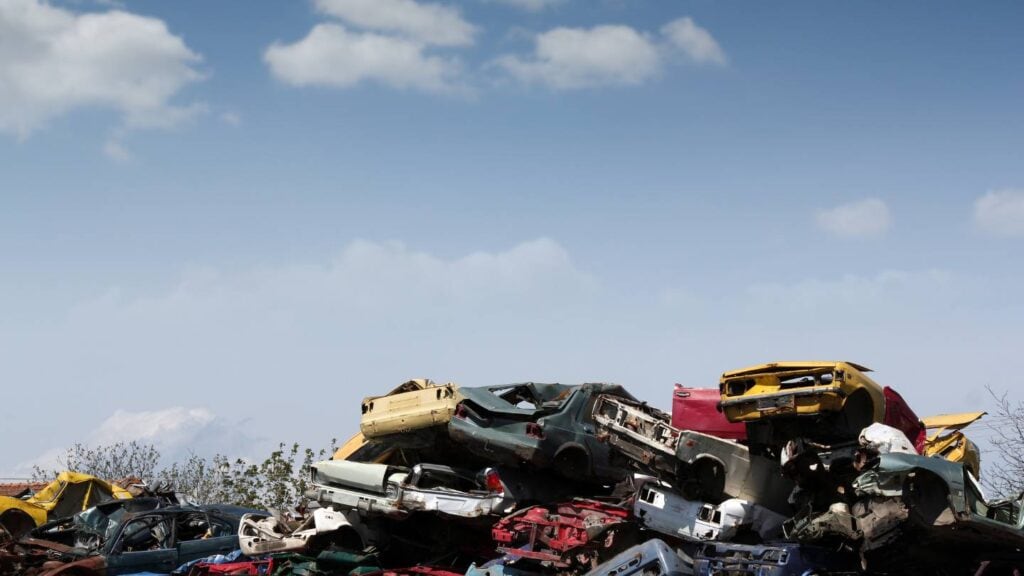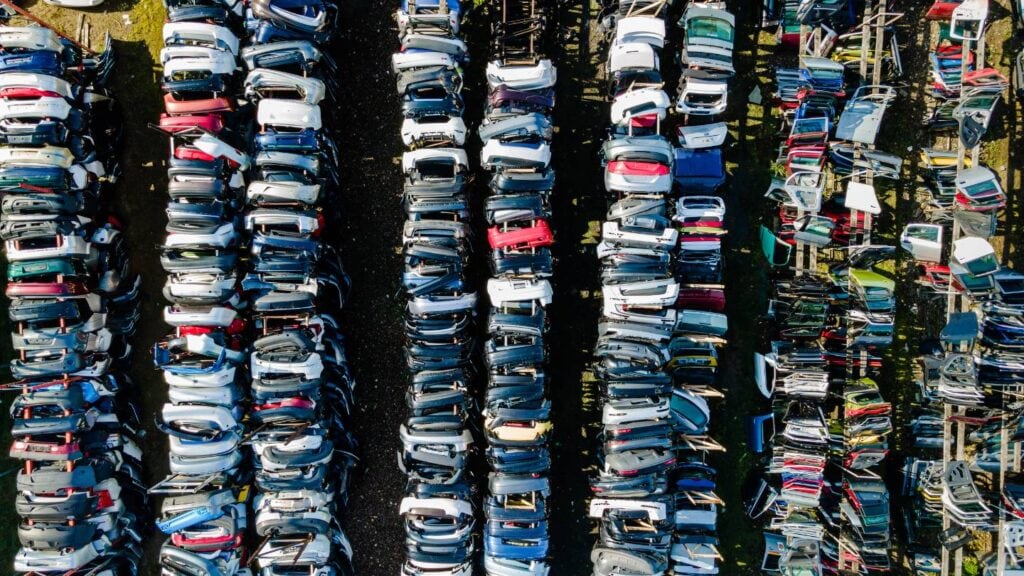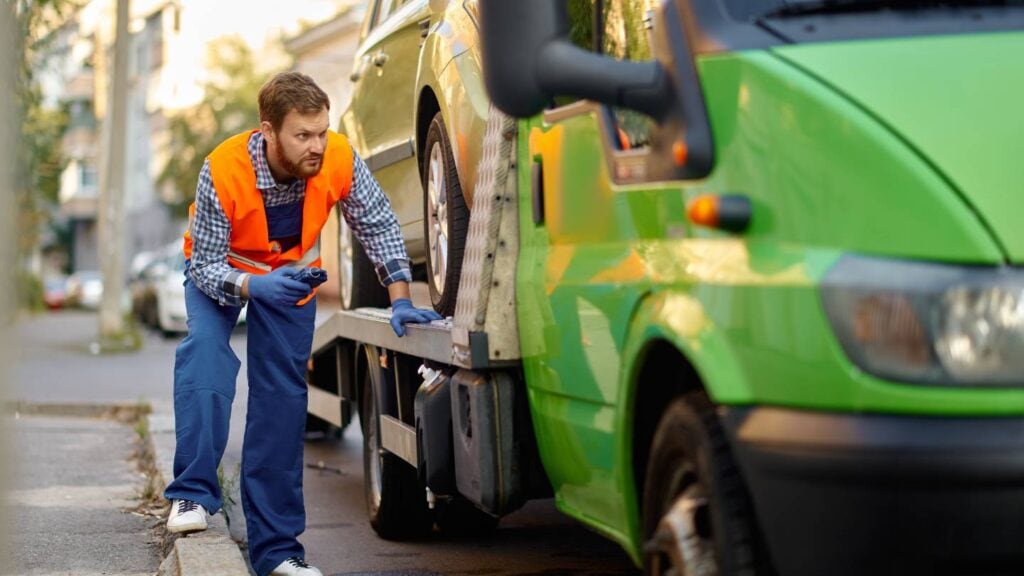If the expense to repair it is higher than its expected future value, it may be best to just throw it away. Anything from new bodywork to a whole new engine may be required to restore the vehicle to a safe driving condition. You should probably take your vehicle to the junkyard if it has started to emit smoke, however this is more noticeable in vehicles that are missing prominent parts like doors.
In addition, unless you plan on selling your car in its current condition, you will need to take it to receive a safety certificate before you can sell it.
Even if you think your automobile is in good working order, it may be worth less to fix it up to roadworthy standards if an official inspection station insists on a long list of fixes before it will pass.
For instance, you discover that the going rate for your year/model of automobile is $4000, but you decide to settle for $3500 due to the dings and scratches.
Your car needs a new safety certificate, and the inspection reveals it will cost $2700 in parts and labour to get it up to speed.
Spending money on advertising and extending the registration for another six months will eat into your $3,500 budget, leaving you with a small profit of at most a few hundred.
If your vehicle is a rare or speciality make, you may want to invest in restoring it, or, if you can't, sell it "as is" to someone who will value it for what it is. But, there is no assurance of this, and sending the car for scrap may be the best option if you need quick cash or simply want to get rid of it.
Actions Taken When Scrapping a Vehicle
There are a few standard procedures to follow if you want to scrap an automobile in Melbourne.
Get the Services of a Qualified Vehicle Removal Company
Choose a reliable automobile removal business that has all the necessary licences from the state of Victoria. The Victorian government's website features a searchable database of authorised auto hauliers.
Get A Quote
Get in touch with a car removal service and give them specifics about your vehicle, such as its make, model, and current state. You can get an estimate for the cost of the car removal service from them.
Schedule A Pick-Up
If you decide to go with the price quote, the car removal service will need to be contacted so that a time can be arranged for the vehicle to be collected.
Make All Required Records Available
The car removal agency will require you to show them your driver's licence and registration papers as evidence of ownership.
Take Out Your Belongings
Before having your automobile picked up, be sure that all of your possessions have been removed.
Get Payments
Payment in the agreed upon amount will be made upon vehicle pickup.
Alert the Proper Authorities
Don't forget to let Old Cars Removed know when your car has been retired from service. This can be done either on the website or at a physical location. If you want to make sure your old automobile is disposed of legally and ethically, you should use a professional car removal service.
How Do I Get Rid of My Old Junk Car in Australia?
Almost every car ever made has gone through the decline from "smooth ride" to "clunker." Of course, that's just the slang word for a car that's in so much disrepair that it's unsafe to drive. And fixing it would cost more than the car is worth.
When this occurs, many people simply leave the automobile where it is.
The reasoning behind this behaviour is obscure. Yet, this results in a financial loss when the car rusts and the paint job deteriorates due to exposure to the elements.
There's also the fact that it's ugly, takes up valuable real estate, and contributes to pollution. To be effective, vehicle recycling must be a priority. You should get rid of your old, broken-down car.
Get in Touch with a Local Car Wrecker Now!
If your car is in such bad shape that you can't sell it privately, this is your best alternative. Genuine scrap metals. Let's just say it, since it bears repeating: junk cars serve no purpose.
Nonetheless, this does not render them worthless.
Even though it can't be driven, that car is still worth something.
They can still make money off of the components that are on it. Your neighbourhood junkyard can also be a good source for affordable used vehicle parts. They have the knowledge and tools to disassemble your car and sell the parts separately.
Calling or filling out an online form is the initial step in selling your vehicle to a wrecking yard.
Give them the rundown on how old the car is and its current condition. Also, the brand and model number will be required. Get a no-obligation offer, and when you're ready, they'll come pick up your vehicle and give you top dollar.
Cut the Vehicle Apart Yourself
That's not a simple task. Reason being: you're essentially playing the part of a car thief.
Companies that specialise in destroying automobiles serve a useful purpose. To do the task on your own, you'll need knowledge, time, a suitable work area, a place to store tools, materials, and scrap metal, and access to the necessary equipment.
You'll need a wide assortment of equipment. A hoist is included for lifting the engine and other heavy components.
No regular individual would have any of those things. Because of this, most people can't get rid of their car in that manner.
Donate the Vehicle
Given that we know your car has some monetary value, it could be a good idea to give it to a good cause. After that, they'll do what you could have done all along and sell it to a junkyard. You might just as easily sell it to a junkyard and give the proceeds to the same organisation.
Can You Get Money for Your Old Car?
You might obtain only a fraction of what you could get if you sold the automobile yourself, depending on the make and model. This is due to the fact that having a problematic vehicle removed is more convenient than selling it yourself but will nett you less money and more work.
It's generally true that scrap yards will pay more for a larger vehicle, but this is by no means a sure thing.
Assuming it is registered and roadworthy enough to be driven, you may be able to sell it privately for less than if it were fault free, but for more than its scrap value, and thus negotiate a higher price at the scrap yard.
In the event that your vehicle is a total loss, you probably won't receive any payment for it. This is because the expense of having it towed away will likely exceed the worth of the scrap metal it contains.
Scrap yards are notorious for their lowball estimates since they believe vehicles to be largely composed of non-functional parts. You can try to haggle for a higher price, but scrap dealers are notoriously difficult to deal with, and you won't be able to increase the offer much.
What Factors Affect the Final Cost?
Vehicles destined for the scrap yard typically have no usable parts, thus potential buyers are limited to offering no more than the vehicle's metal value. How have scrap car prices been affected by the pandemic?
Find out what's going on in the business world today. When selling our old car for junk, where can we earn the most money? We have the responses if these are the queries you have.
The market price for scrap metal is currently rising.
The rising price of scrap metal makes it a good time to scrap your car, and you may even be able to get a higher price for it if you sell it. The monetary worth of a car never completely disappears. Consideration is given to the current market value of the metals in and under the vehicle. This relates to the mass in kilos.
In addition to the manufacturer, trim level, and body style, the model year of the vehicle is also essential.
It's good to know that the car may bring in some cash even in tough economic times. The value of the junk car may be more than the value of the remaining lease.
Make, model, fuel type, annual mileage, export status, and age all play an impact, but whether or not the vehicle is less than ten years old is the most important factor. Consideration is also given to the car's mileage, year, body colour, and the market for aftermarket components. As a result, the value of the scrap vehicle may be more than you anticipate.
Vehicle Disposal Must Be Prioritised
Depreciation is a constant process; your car will lose value gradually over time no matter how long you keep it. Why? The longer you wait, the more the value of the salvageable pieces depreciates, and vice versa if you try to sell the car.
Quickly cashing in on rising scrap metal prices by selling your junk automobile for cash.
Your car fails safety inspection, and the price of repairs is prohibitive.
Unfortunately, it's time to scrap the car. So, how does this thing function, exactly? If you sell your car for recycling, how do you know it will be recycled in an eco-friendly manner?
Businesses have the proper permits and insurance, and they always recycle or reuse any usable parts of a vehicle, so they never harm the environment.
The old car is emptied of any potentially hazardous fluids and components, such the battery, before being scrapped.
Dismantling to recover usable components. These components are typically warehoused at junkyards until they are ready to be sold. Afterwards, the metal is separated from the scrap and sold independently.
Can You Tell Me What Paperwork Is Needed To Scrap My Car?
Provide the necessary information and papers to scrap your vehicle in Melbourne, Victoria:
Authentication of ownership
The vehicle's registration papers or similar evidence of your legal title as the vehicle's owner will be required. Documents such as a sales receipt or a deed transferring ownership can stand in for registration papers if you do not have them.
Picture of your ID
A valid government-issued photo ID, like a driver's licence or passport, will also be required.
Keep in mind that the car removal service may request additional paperwork or details in order to fulfil their commercial and legal obligations.
When arranging a pick-up, it is wise to double-check with the automobile removal service to make sure you have provided all the appropriate paperwork and information.
Conclusion
If the cost to fix a car is going to be more than what the car is worth in the future, scrapping it may be the best option.
In order to scrap a car in Melbourne, one must first find a reputable vehicle removal service, arrange for a pick-up, gather all necessary paperwork, remove personal items, pay any fees owed, notify relevant authorities, and finally dispose of the vehicle in a responsible and lawful manner.
Even though they serve no useful purpose, even the most useless automobiles may have some value to a wrecking yard.
Use your own auto-wrecking skills, give the car to charity, or sell it to a scrap dealer. Currently is a good time to scrap your car because of the rising price of scrap metal on the market.
The metals in and under the car are evaluated based on their current market value. Vehicle disposal should be prioritised as the value of a junk car may exceed the value of the lease's remaining term. Companies that care about the environment will recycle or reuse a vehicle's usable components.
Content Summary
- If the expense to repair it is higher than its expected future value, it may be best just to throw it away.
- Anything from new bodywork to a whole new engine may be required to restore the vehicle to a safe driving condition.
- You should probably take your vehicle to the junkyard if it has started to emit smoke, however, this is more noticeable in vehicles that are missing prominent parts like doors.
- Unless you plan on selling your car in its current condition, you will need to take it to receive a safety certificate before you can sell it.
- Even if you think your automobile is in good working order, it may be worth less to fix it up to roadworthy standards if an official inspection station insists on a long list of fixes before it passes.
- Your car needs a new safety certificate, and the inspection reveals it will cost $2700 in parts and labour to get it up to speed.
- If your vehicle is a rare or speciality make, you may want to invest in restoring it, or, if you can't, sell it "as is" to someone who will value it for what it is.
- But, there is no assurance of this, and sending the car for scrap may be the best option if you need quick cash or simply want to get rid of it.
- There are a few standard procedures to follow if you want to scrap an automobile in Melbourne.
- Choose a reliable automobile removal business that has all the necessary licences from the state of Victoria.
- Get in touch with a car removal service and give them specifics about your vehicle, such as its make, model, and current state.
- You can get an estimate for the cost of the car removal service from them.
- If you decide to go with the price quote, the car removal service will need to be contacted so that a time can be arranged for the vehicle to be collected.
- Before having your automobile picked up, be sure that all of your possessions have been removed.
- Don't forget to let Old Cars Removed know when your car has been retired from service.
- If you want to make sure your old automobile is disposed of legally and ethically, you should use a professional car removal service.
- And fixing it would cost more than the car is worth.
- When this occurs, many people simply leave the automobile where it is.
- This results in a financial loss when the car rusts and the paint job deteriorate due to exposure to the elements.
- You should get rid of your old, broken-down car.
- If your car is in such bad shape that you can't sell it privately, this is your best alternative.
- Even though it can't be driven, that car is still worth something.
- They can still make money off of the components that are on it.
- Your neighbourhood junkyard can also be a good source for affordable used vehicle parts.
- They have the knowledge and tools to disassemble your car and sell the parts separately.
- Calling or filling out an online form is the initial step in selling your vehicle to a wrecking yard.
- Get a no-obligation offer, and when you're ready, they'll come to pick up your vehicle and give you top dollar.
- To do the task on your own, you'll need knowledge, time, a suitable work area, a place to store tools, materials, and scrap metal, and access to the necessary equipment.
- You'll need a wide assortment of equipment.
- Because of this, most people can't get rid of their cars in that manner.
- Given that we know your car has some monetary value, it could be a good idea to give it to a good cause.
- After that, they'll do what you could have done all along and sell it to a junkyard.
- You might just as easily sell it to a junkyard and give the proceeds to the same organisation.
- This is due to the fact that having a problematic vehicle removed is more convenient than selling it yourself but will get you less money and more work.
- It's generally true that scrap yards will pay more for a larger vehicle, but this is by no means a sure thing.
- Assuming it is registered and roadworthy enough to be driven, you may be able to sell it privately for less than if it were fault free, but for more than its scrap value, and thus negotiate a higher price at the scrap yard.
- In the event that your vehicle is a total loss, you probably won't receive any payment for it.
- This is because the expense of having it towed away will likely exceed the worth of the scrap metal it contains.
- You can try to haggle for a higher price, but scrap dealers are notoriously difficult to deal with, and you won't be able to increase the offer much.
- Vehicles destined for the scrap yard typically have no usable parts, thus, potential buyers are limited to offering no more than the vehicle's metal value.
- Find out what's going on in the business world today.
- We have the responses if these are the queries you have.
- The market price for scrap metal is currently rising.
- The rising price of scrap metal makes it a good time to scrap your car, and you may even be able to get a higher price for it if you sell it.
- The monetary worth of a car never completely disappears.
- Consideration is given to the current market value of the metals in and under the vehicle.
- In addition to the manufacturer, trim level, and body style, the model year of the vehicle is also essential.
- The value of the junk car may be more than the value of the remaining lease.
- Make, model, fuel type, annual mileage, export status, and age all play an impact, but whether or not the vehicle is less than ten years old is the most important factor.
- Consideration is also given to the car's mileage, year, body colour, and the market for aftermarket components.
- Depreciation is a constant process; your car will lose value gradually over time no matter how long you keep it.
- The longer you wait, the more the value of the salvageable pieces depreciates, and vice versa if you try to sell the car.
- Quickly cashing in on rising scrap metal prices by selling your junk automobile for cash.
- Businesses have the proper permits and insurance, and they always recycle or reuse any usable parts of a vehicle, so they never harm the environment.
- The old car is emptied of any potentially hazardous fluids and components, such as the battery, before being scrapped.
- Dismantling to recover usable components.
- Keep in mind that the car removal service may request additional paperwork or details in order to fulfil their commercial and legal obligations.
- When arranging a pick-up, it is wise to double-check with the automobile removal service to make sure you have provided all the appropriate paperwork and information.
Frequently Asked Questions about Used Cars
Once a vehicle has been given to an ATF to be scrapped, the AFT will issue a Certificate of Destruction (CoD). A Certificate of Destruction (CoD) is the certificate that proves you have had your car recycled. It can only be issued by a centre with an ATF licence.
Three steps you will want to take before shipping your scrap metal over to the buyer:
- Make sure your material is recyclable. Nonmetallic materials such as cardboard, glass, liquids and plastic can't be recycled with scrap metals.
- Identify and sort.
- Load your materials.
Primarily, the use of scrap metals conserves natural resources. Most metals can be recycled repeatedly, without degrading their properties. A scrap metal recycling facility is like an above-ground mine, supplying raw material for construction, transportation and manufacturing industries.
From the collection of metal for recycling to sorting the scrap for reusing or disposal. So, you need to be comprehensively insured. Otherwise, one accident, injury, or even fatality, to your staff or the public, could see liability lawsuits and legal fees bankrupt your entire business.
Having an estimate for the scrap value of a long-term asset can help a company figure out its annual depreciation cost, which is an important measure since it affects the level of a company's net income.

